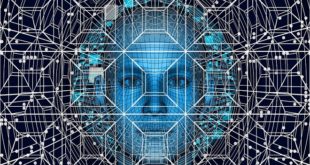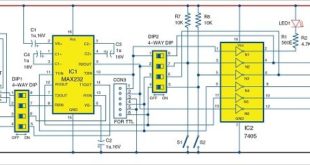Tech Mahindra Ltd is a renowned multinational organisation that specialises in digital transformation, consulting and business solutions to various industry verticals. The company is serving Smart Cities and Smart Industry segment through its consulting, product designing, end-to-end implementation services. Mr Ajay Gupta, Global Head – Smart Cities and IOT at Tech Mahindra discusses about evolution and future of IoT, challenges in IoT adoption, India’s readiness in IoT and much more.
Q. In your opinion, which are the top three technologies that are shaping the future of IoT? How are they influencing the future of IoT?
Internet of Things (IoT) is the next revolution in making, after internet. It has already started impacting our day-to-day lives and business across various domains – from manufacturing to healthcare, retail to smart cities, safety & security to urban mobility. According to me, the top three technologies that are shaping the future of IoT are:
i) AI/ML
ii) Fog computing, and
iii) Blockchain.
IoT will have to be powered by these three technologies to unlock its true potential.
Artificial intelligence (AI) and machine learning (ML) will facilitate deeper analysis of data collected from IoT devices and sensors in real-time scenarios. This analysis will help in data-driven decision-making.
Fog computing or fogging extends cloud capabilities to the network edge. Data is processed and analysed at the edge or close to its source issues like security, bandwidth, latency and reliability. These are addressed to a great extent which result into both cost optimisation and operational efficiency.
Data security has been one of the biggest challenges that slows down IoT adoption. Blockchain has the potential to address this issue as data exchange happens over a distributed and secure network. The transactions are stored in the form of chain of blocks which are very hard to tamper, hence ensures security. Use of blockchain based IoT solutions will not only enhance security but also enable greater transparency and improved audit-level tracking of IoT based transactions.
Q. How do you see the role, technologies like AI/ML will play in the evolution of IoT solutions?
AI and ML are key technologies to accelerate IoT initiatives. We are looking at confluence of related technologies, resulting in well-informed decision-making with little or no human intervention. IoT is all about connecting machines and AI capabilities such as ML-based analytics is about simulating intelligent behaviour across machines. As such, we see a clear confluence between IoT and AI. We are seeing a lot of scope of AI-based analytics in predictive maintenance areas, security and surveillance, healthcare and insurance. This results in huge savings, improvement in efficiency and better risk management.
Q. Between the cellular and NB-IoT/LPWA families of wireless technologies, which one are you betting upon? Why?
Narrowband IoT (NB-IoT) is going to be the future as it provides efficient communication and greater battery life to IoT devices at lower costs. The 3GPP organisation, with the help of NB-IoT, attempts to standardise IoT devices to make them interoperable and reliable.
Tech Mahindra has been the leading SI for its telecom customers for almost four decades. Apart from IoT capabilities, we have strong expertise on 3GPP radio access technology and managed network service. We leverage this expertise to help our customers with NB-IoT technology adoption.
Tech Mahindra NB-IoT solutions include:
- Device testing of NB-IoT enable devices
- E2E testing including devices, network and applications
- Power consumption testing
- Lightweight packet core IoT solutions for IoT traffic profiles
- Over-the-top IoT services
We, at Tech Mahindra, help customers from across diverse industries navigate the complex journey of IoT adoption and transformation by blending innovation, user centricity, technology leadership and process standardisation.
Q. How’s the development of standards (or lack of it) affecting the adoption of IoT?
Development of technology standards is one of the major challenges faced by IoT industry. However, it hasn’t been able to slow down the IoT adoption to a great extent. Presently, there are hundreds of standards already in use on IoT and this number is ever increasing. There are lot of efforts being made to arrive at common standard. According to me, agreement on a standard, which is universally acceptable, will be a challenge. As per Gartner’s research, there will be 25 billion connected devices or things by 2020. A common standard will make IoT solution integration involving various devices quicker and thus saves on effort and time significantly. It will also enable deeper analysis of data insights from cross-domain industries to realise full potential of IoT.
Q. How ready is India’s tech eco-system to develop and deploy IoT solutions?
The Government of India’s initiatives like Digital India and Smart Cities Mission have given a great boost to IoT adoption. Few of the Smart Cities projects have been implemented and a number of them are in progress. These smart city (pan city) solutions are largely IoT based solutions.
The first step in building a smart city is to establish network backbone. There is lot of investment happening to upgrade traditional network to high-speed network that will help in faster IoT adoption.
Tech Mahindra itself is leading in smart city deployment in many states such as UP, Gujarat and Rajasthan. We are also investing in 5G and have made some acquisitions recently as part of our 3-4-3 strategy.
Q. Do you foresee India’s tech industry developing its own IP and branded products/solutions in the IoT arena?
There are many successful examples of world-class IoT products being developed in and exported from India. Industry is changing its focus from IT to digital and even small companies and are working in to create their own IPs. Start-up India initiative has been playing a major role in nurturing innovations and creation of new IPs. The range of solutions are varying from Smart Homes to Smart Farm Solutions to Smart Transport and so on.
Q. Do you see the Open Source phenomenon plays an important role in the IoT arena?
Absolutely, there are a number of open source IoT platforms available, right from data collection to aggregation, analytics to visualisation layer. Open source will address interoperability issue to a great extent. Additionally, open source forums and communities encourage innovation by means of collaboration which is extremely beneficial for open source developers. Open source big data plays an important role in developing Big Data analytics tools. It is much more popular than proprietary solutions, since developers can contribute to the evolvement of platform of their choice.
Q. What’s your opinion on the state of security available for IoT solutions?
Security is one of the top concerns of IoT. It is important that security of IoT data is ensured at each stage of IoT solution value chain, from the point where it gets generated, stored, processed and then transmitted. IoT eco-system of devices, network, platform and applications are interconnected. They communicate with each other through multiple protocols – transfer data, retrieve data, analyse and intelligently respond and trigger actions. Throughout this journey, they are vulnerable to attacks (Virus, Malware, DOS), unauthorised access, intrusion, data and network security. In order to build up a robust and stable IoT system, it is important to have security as one of the central aspects to ensure necessary controls and privacy of users.
A major thrust has been put on the security aspect and these are getting addressed at multiple levels right from data, application and network to the physical layer.
Q. W.r.t. edge vs cloud, where do you think will we see faster development in the next year or two?
There has been a growing need of having a mechanism to capture, store and process large amount of data, without any limitation on storage capacity. This has been one of the principal reasons which has led to a shift from on-premise hosting to Cloud-based hosting. The advent of I0T and increasing number of I0T devices, generating exponential amount of data, has created the need for this even further. With exponential growth in data generation, there is also demand for faster data analysis. Edge computing helps in processing and analysing the data closer to the source. It also helps in addressing the issues related to data transfer like latency and data privacy.
We are looking at many use cases where time is of essence and decision needs to be taken on the edge. However, there is going to be a greater need for cloud-based solutions which will help in aggregating data from multiple sources and perform analytics and push insights to the edge devices. Combination of these two technologies will help in managing the vast amount of data and add significant value to the data generated by IoT devices in coming years.
Q. Any thoughts on ‘where to go edge’ versus ‘where to go cloud’?
I strongly believe these two approaches complement each other and one can’t replace the other. Right balance between the two will ensure maximum benefits from the usage of IoT applications. Edge computing is used for specific use cases where decision needs to be made closure to the source where data is collected and cannot wait for processing to take place on the server end hosted on cloud. E.g. video analytics using edge cameras for surveillance, autonomous cars and ATCS (adaptive traffic control system) would need decision on edge whereas use cases like waste management and environmental data can be processed on cloud.
This content was originally published here.








